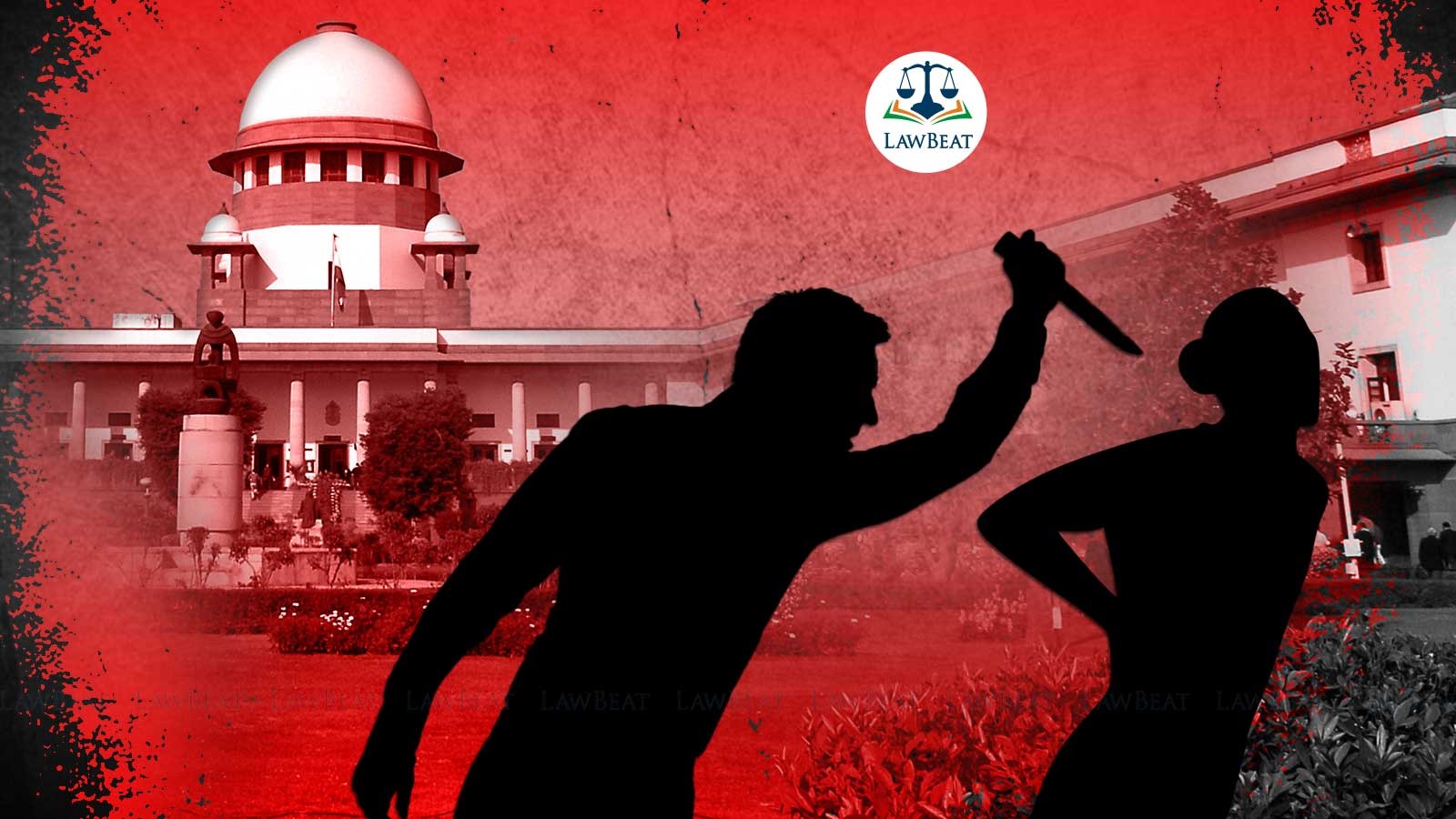SC confirms conviction of man for wife's murder in 1990

Court held that all the facts formed a clinching and complete chain of incriminating circumstances pointing exclusively towards the guilt of the accused-appellant and totally inconsistent with his innocence or the involvement of any other person in the crime
The Supreme Court has on May 7, 2024 confirmed the conviction of a man and sentence of life term imposed upon him for murdering his wife in 1990, relying upon the statement of complainant recorded under Section 299 of the Criminal Procedure Code, despite the fact he never stepped into witness box.
A bench of Justices B R Gavai and Sandeep Mehta dismissed the appeal filed by Sukhpal Singh against the Delhi High Court's judgment of 2010 which had upheld the Karkardooma court's decision of 2003.
The appellant was accused of killing his wife Usha, mother of three children, on May 20, 1990 as he suspected her fidelity and got embroiled in matrimonial dispute. He had left her company and used to live in a village in Uttar Pradesh. However, on the intervening night, his neighbour Ashok Kumar Pathak had spotted him.
Immediately, after the incident, the accused had absconded for 10 years and could be apprehended on August 9, 2000. The neighbour, Pathak who filed the complaint had recorded his statement under Section 299 (Record of evidence in absence of accused) CrPC in proceedings of proclamation and attachment under Sections 82 and 83 of the CrPC. During the murder trial, Pathak shifted his residence and could not depose.
A handwritten note confessing to the murder was found lying underneath the cot on which the dead body was lying. The witness categorically stated that this note was written in the handwriting of the accused appellant which the witness was able to identify on account of both having worked together in the same concern, M/s R P Associates, for a significant period of time.
The appellant challenged the findings of the trial court and the high court, contending both the courts erred in holding that the statement of complainant Pathak had been recorded on oath in the proceedings under Section 299 CrPC. Only the Section 161 CrPC statement of complainant Pathak was exhibited and he never stepped into the witness box.
"We carefully sifted through the record and find that the submission so made is without any foundation," the bench said.
The submission that the complainant was never examined on oath in proceedings under Section 299 CrPC seems to have been made out of sheer ignorance and without ascertaining the correct position from the original record, the bench added.
"Sub-section (1) of Section 299 CrPC is in two parts, the first part provides for proof of jurisdictional fact in respect of abscondence of an accused person and the second that there was no immediate prospect of arresting him. In the event, an order under the said provision is passed, deposition of any witness taken in the absence of an accused may be used against him if the deponent is dead or incapable of giving evidence or cannot be found or his presence cannot be procured without any amount of delay, expense or inconvenience which, under the circumstances of the case, would be unreasonable," the court pointed out.
After going through the statement of the complainant, the bench found the circumstances of motive, last seen, confession and abscondence from the crime scene after committing the crime were all spoken to by the witness Pathak in his statement of July 17, 1991 recorded on sworn affirmation during the proceedings under Section 299 CrPC.
It may be stated here that Pathak had no motive whatsoever to falsely implicate the accused appellant for the murder, the court said.
"The statement of Pathak by itself provides a complete chain of circumstantial evidence sufficient to establish the guilt of the accused appellant," the bench said.
The court also noted the contention of the appellant that the two persons namely, Sandeep Kumar and Rajbir Singh were involved in an illicit affair with the deceased and they might have murdered the lady had no legs to stand because in view of what had been stated by Pathak in his testimony recorded under Section 299 CrPC, it was clear that no one other than the accused appellant was present in the house on the night when she was murdered.
The court also found the Investigating Officer gave unimpeachable evidence proving the various steps taken by him for collection of evidence during investigation so as to link the accused appellant with murder. The accused went absconding after the murder and could not be traced out for almost 10 years which is also a strong circumstance pointing towards his guilty state of mind, it said.
"The circumstances leading to murder were in the exclusive knowledge of the appellant. He has offered no explanation...The bald plea of denial offered by the accused by way of an explanation to this gravely incriminating circumstance is not sufficient to absolve him of the burden cast upon him by virtue of Section 106 of the Indian Evidence Act, 1872," the bench said.
Connected together, all the facts formed a clinching and complete chain of incriminating circumstances pointing exclusively towards the guilt of the accused appellant and totally inconsistent with his innocence or the involvement of any other person in the crime, the bench added.
Holding that the impugned judgments did not suffer from any infirmity warranting any interference, the bench directed the appellant, who was on bail, to surrender within 60 days before the trial court.
